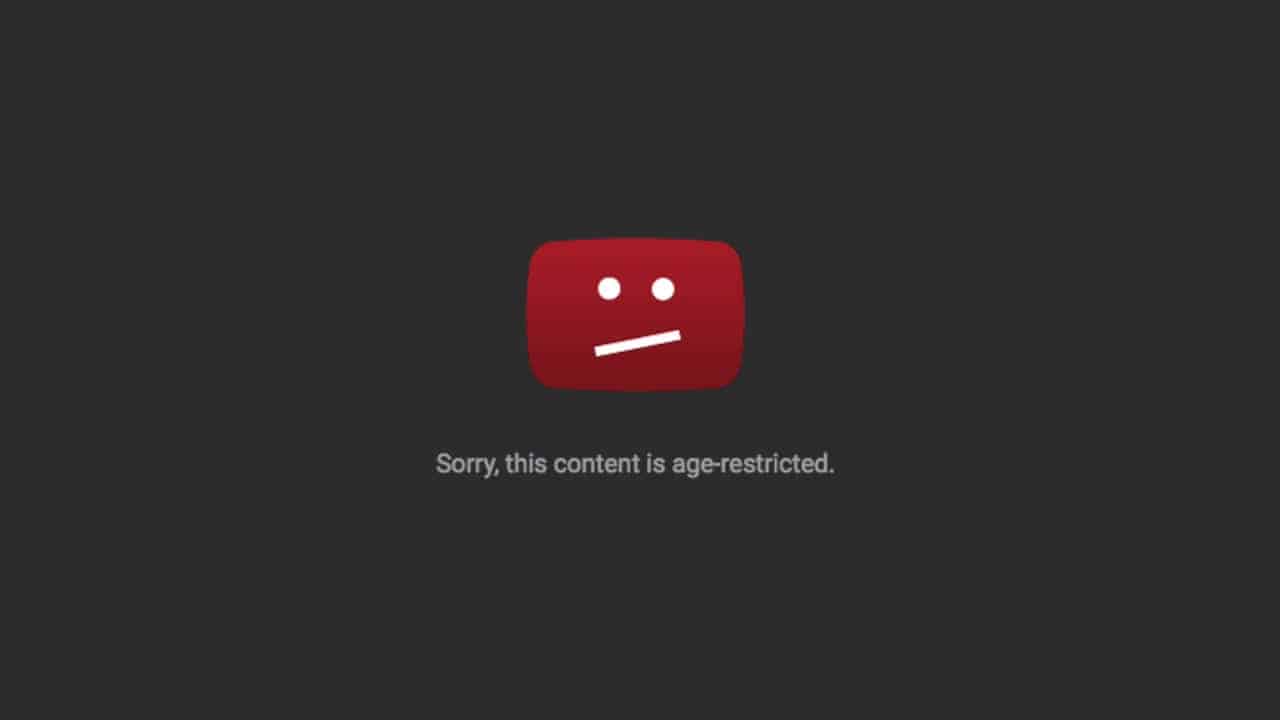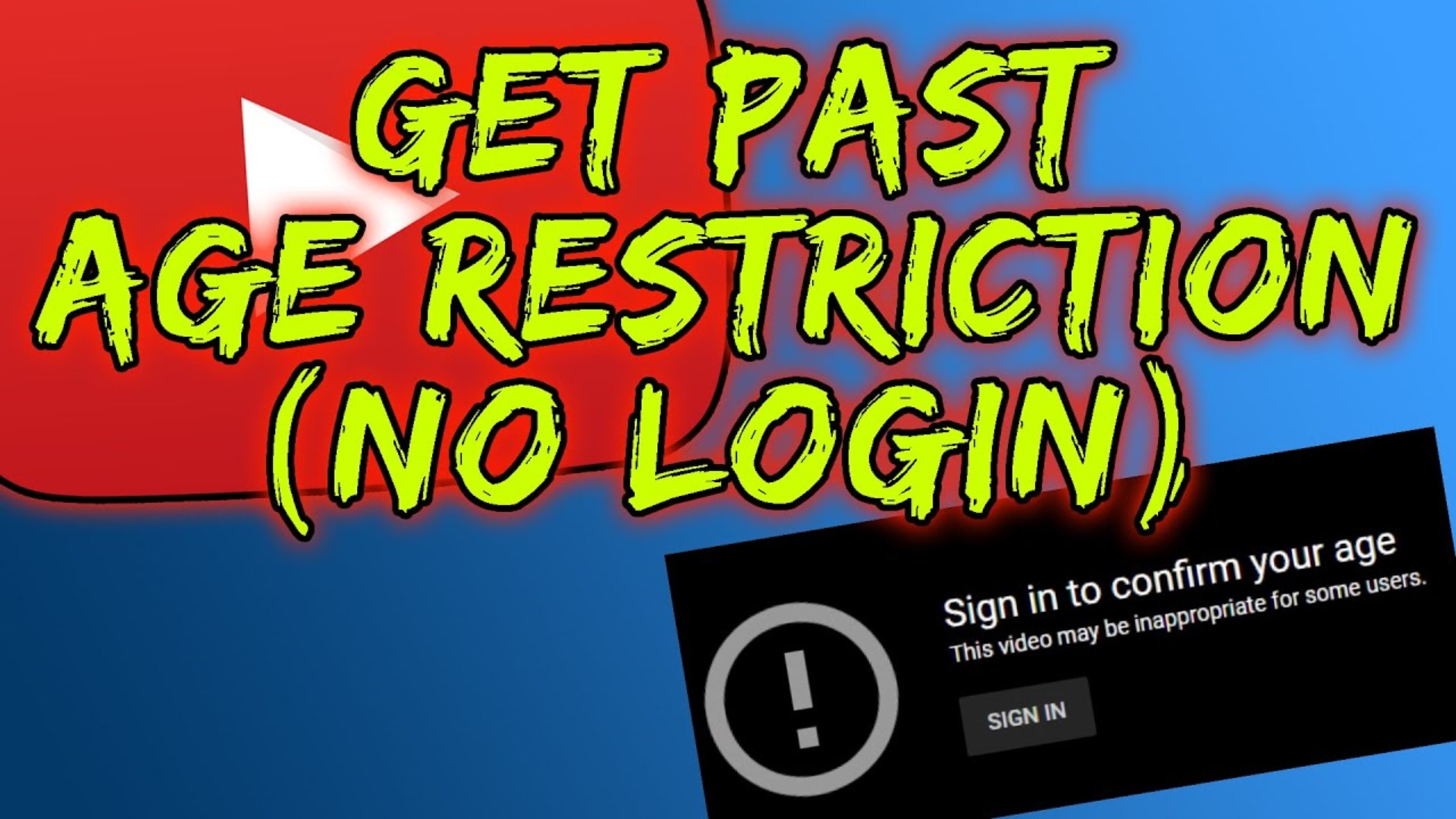Introduction
Have you ever come across a captivating video that you wished you could download and watch later? Perhaps it’s a restricted video, locked behind online platforms or streaming services. While these videos may seem challenging to access, there are various methods you can employ to download them and have them at your fingertips.
Downloading restricted videos can be a useful solution for those who want to watch their favorite content offline or share it with others. However, it is crucial to understand the legal implications behind downloading copyrighted content without permission. Always ensure that you have the necessary rights or permissions to download and use the videos in accordance with the law.
In this article, we will explore different methods that can help you download restricted videos. Each method comes with its own set of advantages and limitations, so you can choose the one that best suits your needs and preferences. Whether you want to download videos from websites, browser tools, or using special software, we’ve got you covered.
Before we dive into the various methods, it’s important to note that the legality of downloading restricted videos depends on your jurisdiction and the terms of service of the website or platform. Always ensure you are complying with the applicable laws and regulations in your region.
Now, let’s explore the different methods that can unlock the world of restricted videos and give you the ability to enjoy your favorite content whenever and wherever you want.
Understanding Restricted Videos
Restricted videos are those that are specifically designed to limit access to certain users or groups of users. These restrictions can be imposed by various entities, including content creators, copyright holders, or platform administrators. The reasons for restricting access to videos can vary, from protecting copyrighted content to implementing regional or age-related restrictions.
One common form of restriction is region-based blocking. This means that certain videos are only accessible to users from specific geographical locations. Platforms may impose regional restrictions to comply with distribution agreements or licensing agreements. For example, a streaming service may only have the rights to stream a particular show in certain countries, and therefore restrict access to users outside those regions.
Age restrictions are another form of limitation placed on certain videos. Content that is deemed suitable only for mature audiences, such as explicit content or adult material, may be restricted to viewers above a certain age. This is often done to comply with legal regulations and to ensure that appropriate content is being viewed by the intended audience.
Furthermore, some videos may be restricted by the copyright holders themselves in order to protect their intellectual property. This can include music videos, movies, or TV shows that are subject to copyright laws. By restricting access to these videos, copyright holders can control the distribution and monetization of their content.
Understanding the reasons for video restrictions is essential when seeking ways to download them. It helps to navigate through the various methods available and ascertain the legality and ethical considerations of downloading restricted videos. Always respect copyright laws and adhere to the terms of service of the platforms from which you want to download the videos.
Now that we have a clearer understanding of restricted videos, let’s explore different methods that can be used to download them and make them accessible for offline viewing.
Legal Implications
When it comes to downloading restricted videos, it’s important to consider the legal implications involved. While the methods we will discuss in this article may allow you to download restricted videos from various sources, it’s essential to ensure that you are in compliance with copyright laws and the terms of service of the platforms you download from.
Downloading copyrighted content without proper authorization can have serious consequences. Copyright infringement is illegal in most jurisdictions and can result in legal action, including fines and even imprisonment. It is crucial to respect the rights of content creators and copyright holders and to obtain appropriate permissions before downloading and using their work.
Many video streaming platforms and websites have explicit terms of service that prohibit the downloading or redistribution of their content without permission. By violating these terms, you not only risk legal consequences but also damage your reputation and may be banned or restricted from accessing the platform in the future.
It’s important to note that not all videos available for download are restricted by copyright or other limitations. Some content may be explicitly labeled as downloadable or may be distributed under a Creative Commons license, which allows for the free use and sharing of the content within certain conditions. However, it’s still crucial to verify the licensing and permissions associated with the specific video you wish to download.
When in doubt, it’s always advisable to seek legal advice or consult the terms of service of the platform from which you are downloading. Additionally, consider alternative methods to access or enjoy restricted videos without resorting to downloading, such as offline streaming options provided by certain platforms.
Ultimately, the responsibility lies with you as the user to ensure that your actions are within the boundaries of the law and respect the rights of content creators. It’s essential to strike a balance between accessing the content you desire and doing so in a lawful and ethical manner.
Now that we are aware of the legal implications associated with downloading restricted videos, let’s explore the various methods that can be used to download them while staying within legal boundaries.
Method 1: Using Built-in Browser Tools
Many web browsers come equipped with built-in tools that can aid in downloading videos from websites. These tools can be handy when it comes to grabbing restricted videos without the need for additional software or extensions.
One common browser tool is the “Inspect Element” feature, which allows you to view the page source code of a website. With this tool, you can often locate the direct URL of the video file and download it directly. To use this method, simply right-click on the video player, select “Inspect Element,” and navigate through the HTML code to find the video source URL. Once the URL is located, copy it and paste it into a new browser tab to initiate the download.
Another built-in browser tool is the “Save Video” option. Some browsers offer a built-in functionality that allows you to save a video file directly from the webpage. Simply right-click on the video player or the video itself and look for an option to “Save Video” or “Download Video.” Clicking on this option will initiate the download process, and the video will be saved to your specified location on your computer.
However, it’s important to note that not all browsers have these built-in tools, and their functionality may vary. Additionally, some websites may implement measures to prevent downloading through browser tools. In such cases, these methods may not be effective.
Lastly, be cautious when utilizing browser tools to download restricted videos. Always respect copyright laws and adhere to the terms of service of the website from which you are downloading. Ensure that you have the necessary permissions or rights to download and use the videos.
Now that we’ve explored the use of built-in browser tools to download restricted videos, let’s move on to the next method: utilizing video downloading extensions.
Method 2: Utilizing Video Downloading Extensions
If you’re looking for a more convenient and versatile way to download restricted videos, utilizing video downloading extensions can be a viable option. These extensions are add-ons or plugins available for various web browsers that enhance their functionality and allow you to download videos from different websites.
Video downloading extensions work by detecting video content on webpages and providing a download button or option for you to initiate the download process. They can automatically detect restricted videos and provide you with a convenient way to save them to your local device.
To utilize video downloading extensions, follow these general steps:
- Search for and choose a reliable video downloading extension that is compatible with your web browser.
- Install the extension by following the instructions provided by the browser or the extension developer.
- Once the extension is installed, navigate to the webpage containing the restricted video you want to download.
- The video downloading extension will typically display a download button or option near the video player or within the browser toolbar.
- Click on the download button or select the appropriate option to initiate the download process.
- Choose the desired download location on your computer and wait for the video to be saved.
It’s important to note that video downloading extensions may not be available for all web browsers or compatible with all websites. Additionally, some websites may employ measures to prevent video downloading, rendering these extensions ineffective in such cases.
Always make sure to use reputable and trusted video downloading extensions to avoid any security risks or malware. Read user reviews and check for updates from the extension developers to ensure the best experience and compatibility with the latest web technologies.
Utilizing video downloading extensions can greatly simplify the process of downloading restricted videos. However, always remember to respect copyright laws and adhere to the terms of service of the websites you are downloading from. Ensure that you have the necessary rights or permissions to download and use the videos.
Now that we have explored the use of video downloading extensions, let’s move on to the next method: downloading from video streaming websites.
Method 3: Downloading from Video Streaming Websites
When it comes to downloading restricted videos, one common method is to directly download them from video streaming websites. This method allows you to access and save videos that are hosted on these platforms, granting you the ability to watch them offline at your convenience.
To get started with downloading from video streaming websites, follow these general steps:
- Identify the video streaming website that hosts the restricted video you want to download. Popular examples include YouTube, Vimeo, Dailymotion, and many more.
- Navigate to the webpage or URL of the video you wish to download.
- Check if the video streaming website provides an official download option. Some websites allow users to download videos directly from their platform by providing a designated “Download” button or link near the video player.
- If an official download option is available, simply click on the “Download” button or link and choose the desired video quality or format. The video will be saved to your specified location on your computer.
- If the video streaming website does not offer an official download option, you can still download the video by using third-party downloading tools or websites specifically designed to fetch and save videos from various streaming platforms. These tools typically require you to provide the URL of the video you want to download, and they will generate a download link for you.
- Copy the URL of the restricted video and paste it into the provided field on the third-party downloading tool or website.
- Click on the download button or follow the instructions provided by the tool or website to initiate the download process.
- Choose the desired download location on your computer and wait for the video to be saved.
It’s important to note that downloading videos from video streaming websites may be subject to the terms of service of the respective platforms. Always ensure that you have the necessary rights or permissions to download and use the videos, and respect any applicable copyright laws.
Furthermore, be cautious when using third-party downloading tools or websites, as they may be unreliable or potentially carry malware. Use trusted and reputable sources, and always exercise caution to protect your devices and personal information.
Downloading from video streaming websites can provide a straightforward way to access and save restricted videos for offline viewing. However, always remember to respect the rules and regulations set by the video streaming platforms and ensure that you are downloading the videos legally.
Now that we have explored the method of downloading from video streaming websites, let’s move on to the next method: downloading with video downloader software.
Method 4: Downloading with Video Downloader Software
If you’re looking for a more robust and feature-rich solution to download restricted videos, using video downloader software can be an effective option. Video downloader software provides advanced functionality and flexibility, allowing you to download videos from various sources and in different formats.
To download restricted videos using video downloader software, follow these general steps:
- Search for and choose a reputable video downloader software that suits your requirements and is compatible with your operating system.
- Download and install the software on your computer, following the instructions provided by the software developer or the installation wizard.
- Launch the video downloader software and navigate to the webpage or URL of the restricted video you wish to download.
- Depending on the software, you may have different options to download the video. Some software may automatically detect the video playing on the webpage and provide a download button or option. Others may require you to paste the URL of the video into the software interface.
- Choose the desired video quality or format for the download, and specify the location where you want the video to be saved on your computer.
- Initiate the download process by clicking on the download button or following the instructions provided by the software.
- Wait for the video to be downloaded and saved to your specified location on your computer.
Video downloader software often comes with additional features such as batch downloading, conversion capabilities, and the ability to extract audio from videos. These features can enhance your video downloading experience and provide you with more options and flexibility.
It’s important to note that video downloader software may have different versions, some of which may be free while others may require a purchase or subscription. Choose the version that best suits your needs and budget.
Always ensure that you are using video downloader software legally and in compliance with copyright laws. Respect the rights of content creators and copyright holders, and avoid downloading content without appropriate permissions or rights.
By utilizing video downloader software, you can have greater control over the downloading process and access a wider range of features. However, always exercise caution and use reputable software from trusted sources.
Now that we have explored the method of downloading with video downloader software, let’s move on to the next method: using downloading apps on mobile devices.
Method 5: Using Downloading Apps on Mobile Devices
Downloading restricted videos on mobile devices is a popular choice for those who prefer to watch videos on the go. To enable video downloads on mobile devices, specific downloading apps are available that allow you to save videos directly to your device’s storage for offline viewing.
To download restricted videos using downloading apps on mobile devices, follow these general steps:
- Search for and choose a reliable and reputable video downloading app that is compatible with your mobile device’s operating system, such as Android or iOS.
- Download and install the downloading app from the official app store, following the instructions provided.
- Launch the downloading app on your mobile device and navigate to the webpage or URL of the restricted video you wish to download.
- Look for a built-in browser within the downloading app or an option to paste the URL of the video you want to download.
- Once the URL is entered or the webpage is loaded, the downloading app will typically detect the video and provide a download button or option.
- Click on the download button or select the appropriate option to initiate the download process.
- Choose the desired video quality or format, and specify the location where you want the video to be saved on your mobile device.
- Wait for the mobile app to download the video and save it to your specified location.
Downloading apps on mobile devices often provide additional features such as the ability to download videos from multiple sources, pause and resume downloads, and manage downloaded files within the app itself.
Just like with other methods of downloading restricted videos, it’s important to ensure that you have the necessary rights or permissions to download and use the videos. Respect copyright laws and adhere to the terms of service of the websites or platforms from which you are downloading.
Also, be mindful of the available storage space on your mobile device, as video files can consume a significant amount of storage. Regularly review and manage your downloaded video files to free up space and optimize your device’s performance.
Using downloading apps on mobile devices provides a convenient and portable solution to download and enjoy restricted videos on the go. Ensure that you select a reliable app from trusted sources and use it responsibly.
Now that we have explored the method of using downloading apps on mobile devices, let’s move on to a bonus tip: capturing restricted video streams.
Bonus Tip: Capturing Restricted Video Streams
In addition to the aforementioned methods, there is an alternative approach to downloading restricted videos known as capturing video streams. This method involves recording or capturing the video stream as it is being played, enabling you to save the video for offline viewing.
To capture restricted video streams, you can use screen recording software or specialized browser extensions designed for this purpose. These tools allow you to record your computer or mobile device’s screen while the video is playing, effectively capturing the restricted content.
Here is a general outline of how to capture restricted video streams:
- Choose a reliable screen recording software or browser extension that suits your needs and is compatible with your device.
- Install and launch the screen recording software or browser extension on your computer or mobile device.
- Navigate to the webpage or URL of the restricted video you wish to capture.
- Start the screen recording process using the selected software or extension. Make sure to set the recording area to cover the video player or the specific area of the screen where the video is being played.
- Play the restricted video and allow the screen recording software or extension to capture the video stream as it plays.
- Pause or stop the recording once the video stream is captured.
- Review the captured video to ensure it is saved properly and meets your desired quality.
It’s important to note that capturing video streams may result in a loss of video quality compared to direct downloads. Additionally, this method requires you to play the entire video while recording, which can be time-consuming and may lead to larger file sizes.
Always ensure that you comply with copyright laws and adhere to the terms of service of the platforms from which you are capturing video streams. Respect the rights of content creators and copyright holders, and use this method responsibly.
Capturing restricted video streams can be especially useful when other downloading methods may not be effective or available. However, keep in mind that this method may not always be the most reliable or efficient option, so consider it as a last resort.
Now that we have explored the bonus tip of capturing restricted video streams, let’s conclude our discussion on the different methods for downloading restricted videos.
Conclusion
Downloading restricted videos can be a valuable solution for accessing and enjoying your favorite content offline. Throughout this article, we have explored different methods that can help you download restricted videos from various sources, such as using built-in browser tools, utilizing video downloading extensions, downloading from video streaming websites, using video downloader software, and utilizing downloading apps on mobile devices. We also discussed the bonus tip of capturing video streams as an alternative method.
It’s important to remember that while these methods can be effective, they come with legal implications. Always ensure that you have the necessary rights or permissions to download and use the videos, and respect copyright laws and the terms of service of the websites or platforms from which you are downloading. Engaging in copyright infringement can result in legal consequences, so it’s essential to stay within legal boundaries and use the methods responsibly.
Choose the method that best suits your needs and preferences, considering factors such as convenience, compatibility, and the quality of the downloaded videos. Keep in mind that not all methods are foolproof or applicable to every situation, as websites and platforms may implement measures to prevent video downloading. Also, it’s important to consider the quality, format, and resolution options available for the downloaded videos to ensure an optimal viewing experience.
Lastly, always exercise caution when downloading videos from unfamiliar sources and use reputable software and tools from trusted developers. Be mindful of potential security risks or malware when using third-party downloading tools or websites.
By understanding the various methods and their implications, you can make informed decisions when it comes to downloading restricted videos. Enjoy the freedom to access your favorite content offline and keep up with your entertainment needs.

























